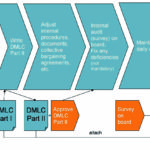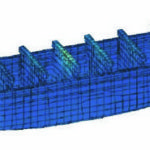Once the Maritime Labor Convention coming into force in August 2013, it will be valid for all ILO members. The new GL Crew Manager system helps shipowners, operators and crewing agencies to meet the requirements
With a sweeping reach and wide ranging application the Maritime Labour Convention of 2006 (MLC 2006) will have a significant[ds_preview] impact on shipowners, managers, crewing agencies and most importantly the seafarers on board. More than 60 existing ILO (International Labor Organization) conventions and recommendations from the past 80 years have been updated and brought together in the Convention. At its entry into force on 20 August 2013, the MLC 2006 will require over 55,000 seagoing vessels to comply. Preparing for this sea change will demand a significant adjustment and impact on every level of an organisation which is a massive task.
About the Maritime Labour Convention
As the so-called »fourth pillar« of shipping regulation, the MLC 2006 will introduce mandatory rules governing working conditions for seafarers sailing on nearly every seagoing commercial ship. The Convention sets out international regulations to provide seafarers with fair, safe and decent working and living conditions, and requires the awareness of all parties involved.
Germany has not yet ratified the convention, mainly due to the complex legal framework and lack of a central, unified flag administration caused by the federal system. Ratification will require changes to a significant number of legal texts that are administered by multiple authorities, all of which will need to co-ordinate their efforts. Once in force, the MLC will be valid for all ILO members, regardless of their ratification of the convention. Port states may inspect vessels of any flag for adherence to the rules. All vessels of 500 GT or more in international trade are affected.
Implementing the MLC 2006
The implementation workflow for the MLC 2006 is shown in Fig. 1. It is evident that close cooperation between the owner, crew managers/crewing agencies, the flag state and the recognised organisation (RO) authorised by the flag state is essential.
While many of the requirements of the MLC focus on processes, procedures and paperwork which can be adjusted relatively quickly, others may require either modifications to the vessel (accommodation, sanitation, noise) or obtaining an exemption from the flag state administration. While some owners will be able to address the MLC requirements in-house, getting expert help can make the process quicker and reduce the risk of nasty surprises.
FutureShip, Germanischer Lloyd’s consulting and engineering unit, can provide expert guidance to streamline the compliance process. Based on an extensive library of best practices and templates, a typical consultation will consist of a set of modular steps, beginning with a management briefing to establish what has to be addressed to achieve compliance.
Gap analysis determines where there are concerns which should be examined and an implementation plan sets out the necessary actions which need to be undertaken to achieve compliance. In drafting the DMLC II (Declaration of Maritime Labour Compliance, part II), which sets out how the owner has implemented the requirements of the Convention, owners can rely on templates developed by FutureShip. These templates are designed to be seamlessly integrated into existing management and computing systems (processes, ISM and other existing systems, intranet/on-board computers, etc.).
Managing documentation with IT solutions
The MLC 2006 requires the documentation of many crewing processes including: checking that all required positions on board filled, that the seafarers are medically fit, well trained and qualified for the duties they are assigned to, and that records are maintained of the seafarers’ daily hours of work and rest. Due to the detail, complexity and sheer amount of data that will be required to be maintained, implementing a strategic IT solution may be a wise move.
The new GL Crew Manager system helps shipowners, operators and crewing agencies to meet these requirements, by enabling the standardisation and optimisation of many tasks, including: recruitment, planning, safe manning, management of personal data, hiring, vacation and leave management. The system can also aid in the preparations for MLC audits by generating a pre-audit checklist, the required documentary evidence, while also highlighting items of non-compliance which need to be addressed. For each individual crew member there may be hundreds of associated pieces of data – qualifications, certificates, licenses, contract data, training needs, and work/rest hours. GL Crew Manager allows for the efficient management of large crew pools through a graphical view of the current and planned assignments for each individual vessel, and automatic matching of crew availability and suitability with vessel manning requirements.
Vibration and noise are key areas of concern for newbuildings
The MLC 2006 has an extremely broad scope; one area of particular importance to consider and which could have a significant effect on vessel design and construction is Title 3.
Title 3 of the MLC 2006, »Accommodation, recreational facilities, food and catering«, addresses issues related to quality of life at sea, including the physical design of seafarer accommodations and the characteristics of their environment (e. g. whole-body vibration, noise, indoor climatic variables and lighting). Noise and vibration can have a strong impact on the well-being of individuals and in particular their ability to concentrate on their work.
The MLC 2006 sets out some general guidelines for noise and vibration but no clear assessment criteria are defined. To try and bring some clarity and establish a consistent approach to the interpretation of compliance, GL has begun developing a guideline to the MLC 2006 requirements. The focus of the guideline will be on noise and vibration requirements in crew living and working spaces. It will set out standards, measurement procedures, required equipment and acceptance criteria. The entry into force of the Convention will bring noise and vibration requirements more starkly into focus. Newbuildings constructed after the date could face expensive alterations to their structure or propulsion plant if sufficient care in the design phase is not taken. To avoid this FutureShip offers a variety of services which can optimise the noise and vibration characteristics of novel ship designs. For the early stages when the room arrangement and the steel structural concepts in living and working spaces are determined, FutureShip offers a noise and vibration pre-check (see Fig. 2). It provides a qualitative assessment whether a new ship design is likely to comply with the specified noise and vibration limits and provides a summary of the investigations which should be considered during later design stages of the vessel.
Preparing seafarers for inspections
The inspection process for the MLC 2006 will also involve personnel both on land and on board, with inspectors tasked with interviewing crew members of individual vessels. To prepare personnel at every level for the Convention’s introduction, GL has developed an e-learning tool which touches on all of the relevant aspects of the MLC 2006. It explains, step by step, every single regulation of the convention. The e-learning tool is designed to help individuals prepare themselves and it explains the main topics of the MLC 2006 in a few words. The e-learning tool covers all of the regulations, including such subjects as: hours of work and hours of rest, seafarers’ employment agreements and on-board complaint procedures.
The tool also provides valuable information and examples of how compliance with the MLC 2006 can be achieved, as well as numerous examples illustrating possible methods of implementation. It shows how a vessel’s owners and crew can prepare themselves for an inspection, clearly and concisely explaining the expectations auditors will have, what questions they will be asking, and how a ship’s crew can demonstrate compliance with the requirements.
In preparing for the MLC 2006 to be forewarned is to be forearmed. The Convention will require both operational and functional changes to the environment on board nearly every seagoing vessel and ship designs which take its requirements into account. Careful planning, consulting with the right people, and a clear understanding and awareness of what the Convention requires will avoid the costly pitfalls, delays and problems which await the unwary and unprepared.
Jan Haul



















